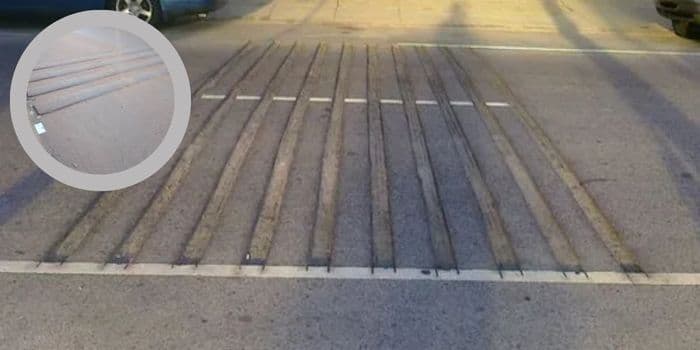We're loading the full news article for you. This includes the article content, images, author information, and related articles.
A common misconception among Kenyan drivers regarding road safety features is creating risks. Authorities clarify that rumble strips are auditory warnings, not traffic-calming bumps—a critical distinction for preventing accidents and vehicle damage.

Across Kenya’s expanding road network, from the Nairobi Expressway to the busy Northern Corridor, a crucial misunderstanding of road safety infrastructure is putting drivers, passengers, and vehicles at risk. Many motorists treat rumble strips—the grooved patterns on the tarmac—as "mini bumps," braking sharply before crossing them. This common practice not only contradicts their intended purpose but also creates unnecessary traffic disruption and potential hazards. According to road safety experts and transport authorities, this confusion warrants urgent clarification to enhance safety on the nation's highways.
Rumble strips are scientifically designed safety features intended to provide auditory and tactile warnings to drivers. Their primary function is to alert motorists who may be drowsy, distracted, or inattentive, preventing serious accidents like lane departures and head-on collisions. When a vehicle's tyres pass over the grooves, a distinct rumbling sound and vibration are generated, grabbing the driver's attention without requiring them to take their eyes off the road. They are hazard warnings, not hazards themselves, and are engineered to be crossed at the posted speed limit without causing damage to a vehicle or discomfort to its occupants.
An official from the Kenya National Highways Authority (KeNHA), speaking on background during a recent road safety forum on Tuesday, 28 October 2025, in Nairobi, emphasized this distinction. "We install transverse rumble strips to signal an upcoming change in road conditions—such as a junction, a toll plaza, or a sharp curve ahead," he stated. "They are an alert system, not a traffic calming device. Braking hard for them is unnecessary and can surprise the driver behind you, leading to rear-end collisions."
This perspective is supported by international best practices. The American Association of State Highway and Transportation Officials (AASHTO) guidelines specify that rumble strips should be designed to alert, not jolt. In contrast, speed bumps and humps are engineered specifically to physically force a reduction in vehicle speed in sensitive areas like school zones, residential streets, and market centres where pedestrian traffic is high. Their vertical design makes crossing at high speed both uncomfortable and damaging to a vehicle's suspension system.
The National Transport and Safety Authority (NTSA) has previously expressed concern over road safety, noting that driver behaviour, including unsafe overtaking and speeding, remains a leading cause of fatalities. Understanding the function of road furniture is a key component of safe driving. An NTSA road safety awareness campaign launched earlier in the year aims to educate all road users on their responsibilities. Misinterpreting a rumble strip could lead a driver to ignore the actual impending hazard it is warning them about, nullifying its safety benefit.
While the intent behind rumble strips is clear, public complaints in Kenya have highlighted issues with their implementation. Motorists have previously raised concerns about strips that are excessively harsh or placed in a "haphazard, rogue, and irregular manner," causing damage to vehicles and discomfort for cyclists. In 2023, some Nairobi residents called for their removal, labelling them outdated. There have also been cases, such as in Vihiga County, where business owners complained that the noise from the strips drove away customers.
These grievances underscore the need for adherence to standardized design and installation protocols. In June 2025, the Ministry of Roads and Transport launched updated road design manuals to incorporate international best practices, addressing challenges like road safety and climate change. According to KeNHA, these new standards will guide the construction of all future road infrastructure to ensure it is safe, resilient, and fit for purpose.
For the Kenyan driver, the message from authorities is unequivocal: do not treat rumble strips like speed bumps. They are a vital communication tool from the road to the driver. Hearing and feeling their vibration should prompt a driver to heighten their awareness and look for accompanying road signs that indicate the specific hazard ahead, not to slam on the brakes. As Kenya continues to invest heavily in upgrading its transport infrastructure, public education on how to interact with these modern safety features is paramount to reducing the tragic toll of road accidents, which claim thousands of lives annually.
Keep the conversation in one place—threads here stay linked to the story and in the forums.
Other hot threads
E-sports and Gaming Community in Kenya
Active 6 months ago
Popular Recreational Activities Across Counties
Active 6 months ago
The Role of Technology in Modern Agriculture (AgriTech)
Active 6 months ago
Investing in Youth Sports Development Programs
Active 6 months ago